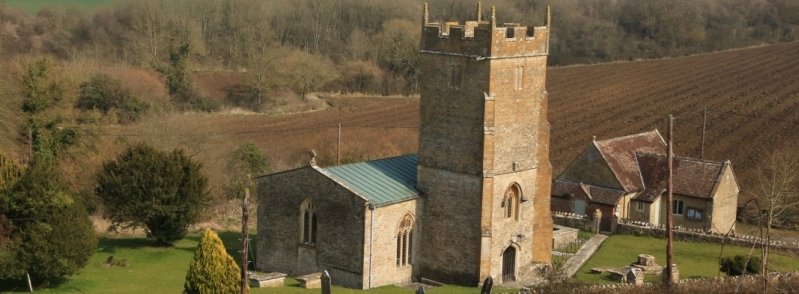St Peter's Church

St Peter’s forms part of the Benefice of Bruton and District which includes St Mary’s in Bruton, St Leonard’s in Pitcombe, St John the Baptist in Brewham and Holy Trinity in Wyke Champflower. The Rector is Rev’d Jonathan Evans, based at St Mary’s and his contact details are on their website.
"The Dove" is the Parish Magazine covering Bruton and the surrounding villages of Batcombe, Brewham, Lamyatt, Pitcombe, Redlynch, Shepton Montague, Upton Noble and Wyke Champflower. The latest copy of the magazine is available from the Montague Inn, the church and most of the grocery stores in Bruton.
The Benefice also produces a regular newsletter containing information of particular interest and relevance to the church community within the Benefice. Copies, and an option to receive future newsletters by email, are available at St Mary's Website.
The Church of St. Peter Building
The parish Church of Saint Peter has 13th century origins and has been designated as a Grade II listed building. It was seriously damaged by a fire in 1964 and restored two years later.
King James Bible 400th. anniversary
Published by Robert Barker, ‘printer to the King’s Most Excellent Majesty’, in 1611.
The media is excited with anniversaries, natural or man- made disasters or the life and death of renowned composers, but this coming 400th. anniversary has so far attracted little attention. Here is a reminder as this anniversary year now becomes imminent
The commissioning of this new translation of the bible in 1604 arose out of the great meeting in Hampton Court of the King and representatives of the various sections of the Protestant churches in England. It was intended to help to define the relationship between the Monarch and his Church, to bring greater unity to the Church and to distinguish between it and the Catholic one of Rome. The one new, uniform translation was to replace pre-existing ones, such as the Bishop’s bible, the Geneva and Tyndale’s. It was to be shaped by the learned authority of Oxford and Cambridge, revised by the bishops and finally approved by James himself.
Teams of translators were appointed, allocated a section of the bible to translate from the original Greek and Hebrew texts and rules to control their methods, the aim being to retain a natural harmony of style throughout. In this they were remarkably successful. The author of the preface wrote ‘translation it is that openeth the window, to let in the light, it breaketh the shell so that we may eat the kernel'.
The translation lasted until the revision in Victorian times, published in 1885. Further revision took place after the Second World War to produce the New English Bible, the child of committees, translating panels, literary advisers and representatives. It was deemed by T.S.Eliot at the time ‘to astonish in its combination of the vulgar, trivial and the pedantic’.
Roger Ketley
